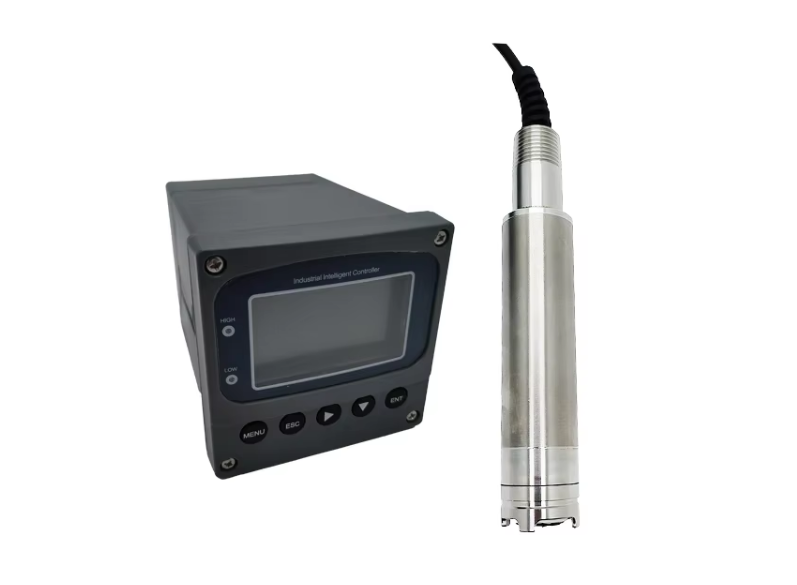ভূমিকা
ফিলিপাইনে, কৃষি জাতীয় অর্থনীতির একটি গুরুত্বপূর্ণ অংশ, যেখানে জনসংখ্যার প্রায় এক-তৃতীয়াংশ তাদের জীবিকা নির্বাহের জন্য কৃষির উপর নির্ভর করে। জলবায়ু পরিবর্তন এবং পরিবেশ দূষণের তীব্রতার সাথে সাথে, সেচের জলের উৎসের গুণমান - বিশেষ করে দ্রবীভূত অক্সিজেনের (DO) মাত্রা - ফসলের বৃদ্ধি এবং উৎপাদনশীলতার উপর ক্রমবর্ধমান প্রভাব ফেলছে। দ্রবীভূত অক্সিজেন কেবল জলজ প্রাণীর বেঁচে থাকার উপরই নয়, মাটির স্বাস্থ্য এবং উদ্ভিদের বৃদ্ধির উপরও প্রভাব ফেলে। এই কেস স্টাডিটি অন্বেষণ করে যে কীভাবে ফিলিপাইনের একটি স্থানীয় কৃষি সমবায় ফসলের উৎপাদন এবং গুণমান বৃদ্ধির জন্য জলের উৎসগুলিতে দ্রবীভূত অক্সিজেনের মাত্রা কার্যকরভাবে পর্যবেক্ষণ এবং উন্নত করেছে।
প্রকল্পের পটভূমি
২০২১ সালে, দক্ষিণ ফিলিপাইনের একটি ধান চাষকারী সমবায় তাদের সেচের পানিতে অপর্যাপ্ত দ্রবীভূত অক্সিজেনের সমস্যার সম্মুখীন হয়। অত্যধিক সার ব্যবহার এবং দূষণের কারণে, জলাশয়গুলি মারাত্মক ইউট্রোফিকেশনের শিকার হয়, যা জলজ বাস্তুতন্ত্র এবং পানির গুণমানকে উল্লেখযোগ্যভাবে প্রভাবিত করে, যার ফলে ফসলের রোগ বৃদ্ধি পায় এবং ফলন হ্রাস পায়। ফলস্বরূপ, সমবায়টি দ্রবীভূত অক্সিজেনের মাত্রা বৃদ্ধি করে পানির গুণমান উন্নত করার লক্ষ্যে একটি প্রকল্প শুরু করে, যার ফলে ধানের বৃদ্ধি আরও ভালো হয়।
দ্রবীভূত অক্সিজেনের জন্য পর্যবেক্ষণ এবং বর্ধন ব্যবস্থা
-
জলের গুণমান পর্যবেক্ষণ ব্যবস্থা: সমবায়টি নিয়মিতভাবে দ্রবীভূত অক্সিজেনের ঘনত্ব, pH স্তর এবং অন্যান্য গুরুত্বপূর্ণ পরামিতিগুলি মূল্যায়নের জন্য উন্নত জলের গুণমান পর্যবেক্ষণ সরঞ্জাম চালু করেছে। রিয়েল-টাইম ডেটার সাহায্যে, কৃষকরা তাৎক্ষণিকভাবে সমস্যাগুলি সনাক্ত করতে এবং যথাযথ ব্যবস্থা নিতে পারে।
-
দ্রবীভূত অক্সিজেন বর্ধন প্রযুক্তি:
- বায়ুচলাচল ব্যবস্থা: প্রধান সেচ চ্যানেলগুলিতে বায়ুচালিত যন্ত্র স্থাপন করা হয়েছিল, যা বায়ু বুদবুদ প্রবেশের মাধ্যমে পানিতে দ্রবীভূত অক্সিজেন বৃদ্ধি করেছিল, ফলে পানির গুণমান উন্নত হয়েছিল।
- ভাসমান উদ্ভিদ বিছানা: প্রাকৃতিক ভাসমান উদ্ভিদের স্তর (যেমন ডাকউইড এবং জলাশয়) সেচ জলাশয়ে প্রবেশ করানো হয়েছিল। এই উদ্ভিদগুলি কেবল সালোকসংশ্লেষণের মাধ্যমে অক্সিজেন ছেড়ে দেয় না বরং পুষ্টিও শোষণ করে, ফলে জলের ইউট্রোফিকেশন বাধা দেয়।
-
জৈব চাষ পদ্ধতি:
- জৈব চাষের নীতিগুলিকে উৎসাহিত করা হয়েছে যা রাসায়নিক সার এবং কীটনাশকের ব্যবহার কমিয়ে দেয়, পরিবর্তে জল দূষণ কমাতে এবং সামগ্রিক জলের গুণমান উন্নত করতে কম্পোস্ট এবং জৈব কীটনাশক ব্যবহার করে।
বাস্তবায়ন প্রক্রিয়া
-
প্রশিক্ষণ এবং জ্ঞান বিতরণ: সমবায়টি পানির গুণমান পর্যবেক্ষণের গুরুত্ব এবং দ্রবীভূত অক্সিজেনের মাত্রা বৃদ্ধির বিভিন্ন পদ্ধতি সম্পর্কে কৃষকদের শিক্ষিত করার জন্য একাধিক প্রশিক্ষণ কর্মশালার আয়োজন করে। কৃষকরা পানির গুণমান পর্যবেক্ষণ সরঞ্জাম ব্যবহার এবং বায়ুচলাচল ব্যবস্থা পরিচালনা করতে শিখেছে।
-
পর্যায়ক্রমে মূল্যায়ন: প্রকল্পটি কয়েকটি পর্যায়ে বিভক্ত ছিল, প্রতিটি পর্যায়ের শেষে দ্রবীভূত অক্সিজেনের মাত্রার পরিবর্তন বিশ্লেষণ এবং ধানের ফলনের তুলনা করার জন্য মূল্যায়ন করা হয়েছিল।
ফলাফল এবং ফলাফল
-
দ্রবীভূত অক্সিজেনের মাত্রা উল্লেখযোগ্যভাবে বৃদ্ধি: বায়ুচলাচল এবং ভাসমান উদ্ভিদ বিছানা প্রযুক্তি বাস্তবায়নের মাধ্যমে, সেচের জলে দ্রবীভূত অক্সিজেনের মাত্রা গড়ে 30% বৃদ্ধি পেয়েছে, যার ফলে পানির গুণমানে লক্ষণীয় উন্নতি হয়েছে।
-
উন্নত ফসলের ফলন: পানির গুণমান উন্নত হওয়ার সাথে সাথে, সমবায়টি ধানের উৎপাদনে ২০% বৃদ্ধি পেয়েছে। অনেক কৃষক জানিয়েছেন যে ধানের বৃদ্ধি আরও শক্তিশালী হয়েছে, পোকামাকড় ও রোগের প্রকোপ হ্রাস পেয়েছে এবং সামগ্রিক মানের উন্নতি হয়েছে।
-
কৃষকদের আয় বৃদ্ধি: উৎপাদন বৃদ্ধির ফলে কৃষকদের আয় উল্লেখযোগ্যভাবে বৃদ্ধি পেয়েছে, যা সমবায়ের সামগ্রিক অর্থনৈতিক সুবিধায় অবদান রেখেছে।
-
টেকসই কৃষি উন্নয়ন: জৈব চাষ এবং পানির মান ব্যবস্থাপনার প্রচারের মাধ্যমে, সমবায়ের কৃষি পদ্ধতিগুলি আরও টেকসই হয়ে ওঠে, ধীরে ধীরে একটি ইতিবাচক পরিবেশগত চক্র তৈরি করে।
চ্যালেঞ্জ এবং সমাধান
-
তহবিলের সীমাবদ্ধতা: প্রাথমিকভাবে, সীমিত তহবিলের কারণে সমবায়টি চ্যালেঞ্জের মুখোমুখি হয়েছিল, যার ফলে একবারে সরঞ্জামে প্রচুর পরিমাণে বিনিয়োগ করা কঠিন হয়ে পড়েছিল।
সমাধান: সমবায়টি স্থানীয় সরকার এবং বেসরকারি সংস্থাগুলির (এনজিও) সাথে সহযোগিতা করে তহবিল সহায়তা এবং প্রযুক্তিগত নির্দেশনা নিশ্চিত করে, বিভিন্ন পদক্ষেপের পর্যায়ক্রমে বাস্তবায়নের সুযোগ করে দেয়।
-
কৃষকদের মধ্যে পরিবর্তনের প্রতিরোধ: কিছু কৃষক জৈব চাষ এবং নতুন প্রযুক্তি সম্পর্কে সন্দিহান ছিলেন।
সমাধান: কৃষকদের আত্মবিশ্বাস এবং অংশগ্রহণ বৃদ্ধির জন্য প্রদর্শনী ক্ষেত্র এবং সাফল্যের গল্প ব্যবহার করা হয়েছিল, যা ধীরে ধীরে ঐতিহ্যবাহী কৃষি পদ্ধতি থেকে সরে আসার জন্য উৎসাহিত করেছিল।
উপসংহার
ফিলিপাইনে ফসল উৎপাদন উন্নত করতে এবং টেকসই উন্নয়ন অর্জনের জন্য কৃষিক্ষেত্রে পানির গুণমানে দ্রবীভূত অক্সিজেনের মাত্রা কার্যকরভাবে পরিচালনা করা অত্যন্ত গুরুত্বপূর্ণ। পদ্ধতিগত পর্যবেক্ষণ এবং উন্নতির ব্যবস্থার মাধ্যমে, কৃষি সমবায় সফলভাবে পানির গুণমান উন্নত করেছে, উচ্চমানের এবং উচ্চ-ফলনশীল ধান উৎপাদনকে উৎসাহিত করেছে এবং অন্যান্য অঞ্চলে অনুরূপ অনুশীলনের জন্য মূল্যবান অন্তর্দৃষ্টি প্রদান করেছে। ভবিষ্যতে, প্রযুক্তির অগ্রগতি এবং নীতিগুলি এই উদ্যোগগুলিকে সমর্থন করার সাথে সাথে, আরও বেশি কৃষক এই অনুশীলনগুলি থেকে উপকৃত হবেন, যা ফিলিপাইন জুড়ে টেকসই কৃষি উন্নয়নকে ত্বরান্বিত করবে।
আরও জল সেন্সরের জন্য তথ্য,
অনুগ্রহ করে Honde Technology Co., LTD-এর সাথে যোগাযোগ করুন।
Email: info@hondetech.com
কোম্পানির ওয়েবসাইট:www.hondetechco.com
টেলিফোন: +৮৬-১৫২১০৫৪৮৫৮২
পোস্টের সময়: জুলাই-১৫-২০২৫


